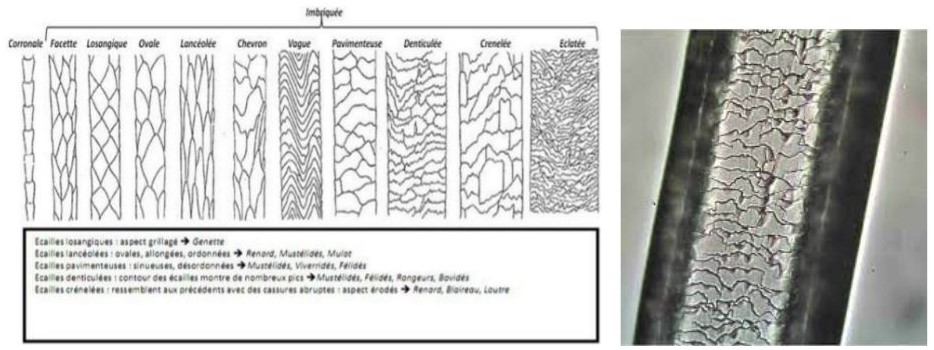WET FELTING PROCESS¶
What is felt ?¶
It is a thick and unwoven fabric obtained by pressing and agglutinating hairs or wool.
How does the felting process work ?
Hairs are constituted of keratine. They are cylinders covered of scales or flakes. Their shape can vary according to the species of the animal from whom the hairs come from, but the general basis of its constitution is scale covered.
When you heat the hairs, and the scales open. Then, when you apply a vigorous movement on them, the scales move. Your movements of pressure and friction melt the fibers, and the scales of flakes can catch on others scales around them. It agglomerates : it's felting.

Felt and boiled wool, what the difference ?
- Felt : felt is made out of raw wool. First, the fibers is carded, then combed, and finally scalded. The fabric is also beat after this process. In the industry, it is also made out of other materials, such as polyamid or polyester.
* Strength| Strong
* Elasticity | Low
* Touch | Coarse (the thicker the fibers, the coarser the fabric)
* Weight | Low
- Boiled wool : made out of a thread of wool. First, this thread is knitted, then it is boiled. Pockets of air are created when the milling process occurs.
* Strength| Strong, more durable than felt
* Elasticity | More elastic than felt
* Touch | Softer than felt
About felt craftmanship : from Prehistoric times to nowadays¶
Felt could have been done for the first time during the Middle Paleolithic, because human being at this time was using animals fur to protect himself from cold. Sleeping regularly on the fur could have produced felt.
Felt could be one of the most ancient materials of humanity.
Discoveries of :
Wall hanging in Turkey, 6400 before JC.
Fragments of felt in Denmark, 1400 to 1200 before JC
Felt headdress, shoes and blankets in Russia, 500 years before JC
In France, you have the Museum of felt, le Musée du feutre de Mouzon (Ardennes). There, you can fing
Nowadays¶
During the Textile and Scaffold Week, we had the opportunity with Le Textile Lab (and Lucia Javicoli, who attended Fabricademy program last year), to visit l'atelier Morse Felt Studio, located in La Mulatière, near Lyon. She showed us her work and the various pieces she makes with sheep wool.

Ghislaine Garcin
Why felting in this project ?¶
The felting technique requires to work with raw fibers, but dog hairs are very soft. This idea of softiness was really important to me, since I want the participants of the workshop to feel at ease while practicing.
Also, this technique involves both the precision of the hand on the first steps of the process (placing the fibers onto the template), but it also require the full body energy during the felting time, when rolling the pebble to gather the fibers one with each other.
Felting process : wet felting¶
The process










Felting results par Guillerm